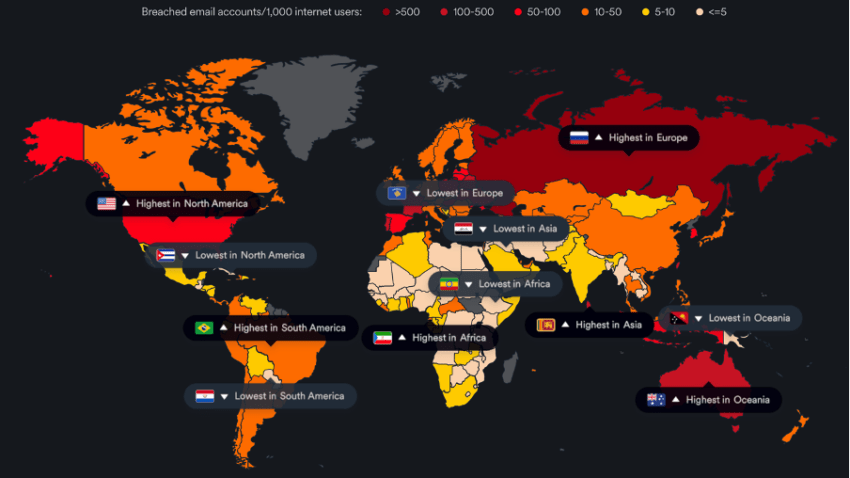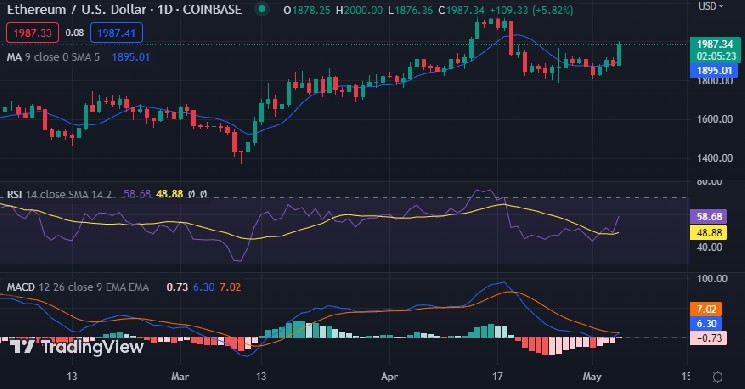The Most Devastating Cyber Attacks and Data Breaches So Far This Decade

Cyber attacks continue to see a rise in the crypto sector and beyond. Here is a list of some of the worst hacks of the decade. After assessing and comparing the flaws that enabled them, it is crucial to improve cybersecurity for all firms.
Over the past decade, some of the most significant hacks have occurred in finance, healthcare, and government industries. The commonality among these attacks is that they were executed with the intent to steal valuable data, money, or other assets.
The attackers behind these attacks have been sophisticated, well-funded, and highly skilled in exploiting vulnerabilities in cybersecurity systems.
Here are some of the most prominent hacks from the current decade, what they have in common, and what lessons we can learn to improve cybersecurity in the crypto sector and beyond.
The list comprises the most significant hacks in the past decade, starting from 2013.
Major Exploits In the US
One of the most notable attacks of the decade occurred in 2013 when Target, a major US retailer, was hacked. The attackers stole the credit and debit card information of approximately 40 million customers and the personal information of another 70 million customers.

Global data breach heat map Source: Surfshark
The attack was executed by exploiting a vulnerability in Target’s point-of-sale (POS) system. This allowed the attackers to steal customers’ information as they swiped their cards.
Moving on to some of the biggest hacks from 2014 and 2015 include the following:
- Mt. Gox: In 2014, Mt. Gox, a Japan-based Bitcoin exchange, suffered a massive hack that lost 850,000 bitcoins. Worth around $450 million at the time.
- Sony Pictures: In 2014, Sony Pictures was hacked. Resulting in the theft of confidential company information and releasing personal emails between executives.
- Ashley Madison: In 2015, the online dating website Ashley Madison was hacked, releasing millions of users’ personal information.
Assessing the Attacks
These hacks have some commonalities. Firstly, they targeted high-profile companies that held sensitive information or a significant amount of cryptocurrency.
Secondly, the attackers used sophisticated tactics to gain access to the systems. In most cases, the hacks were detected when significant damage had already been done. The hacks from this period have several lessons to offer the cybersecurity industry.
One is the importance of implementing robust security measures to protect sensitive data. This includes using multi-factor authentication, encrypting data, and monitoring systems for unusual activity.
Another lesson is the need for better collaboration and information-sharing between organizations. In the case of the Mt. Gox hack, the company was slow to disclose the breach, which worsened the damage caused.
The incident highlights the importance of timely and transparent communication during a cyber-attack.
Alarming Surge in Cyberattacks
In 2016, the Bangladesh Bank heist became one of the largest cyberheists in history, with attackers stealing $81 million from the bank’s account at the Federal Reserve Bank of New York. The attackers accessed the bank’s SWIFT credentials and used them to send fraudulent payment orders to the Federal Reserve Bank.
Therefore, the lesson learned from this hack is that financial institutions must implement multi-factor authentication and strict access controls to protect their SWIFT credentials and prevent fraudulent transactions.
In 2017, Equifax, one of the largest credit reporting agencies in the US, was hacked, compromising the personal information of 143 million people. The attackers exploited a vulnerability in Equifax’s web application framework to access the company’s databases.
The lesson learned from this hack is that organizations must regularly patch vulnerabilities and implement robust security protocols to prevent unauthorized access to sensitive data.
Another significant hack occurred in 2018, when Coincheck, a Japanese cryptocurrency exchange, was hacked, resulting in the theft of approximately $530 million worth of NEM coins. The attackers accessed Coincheck’s hot wallet, which contained the private keys to access customers’ cryptocurrency.
The lesson learned from this hack is that cryptocurrency exchanges must implement strict security protocols, such as cold storage for private keys and multi-factor authentication, to protect customers’ assets.
Staggering Increase in Bad Actors’ Activity (2020 to 2023)
Big Names Involved in Hacks (2020)
In 2020, the SolarWinds hack became one of history’s most significant cybersecurity incidents. Attackers compromised the systems of multiple US government agencies, including the Department of Homeland Security and the Department of Defense.
The attackers gained access by compromising SolarWinds’ software supply chain, allowing them to insert malware into the company’s updates.
But the list goes on with significant exploits within the same period.
The Microsoft customer database hack in 2020 is particularly concerning as it compromised 250 million sensitive customer data, including email addresses and account information.
This incident underscores the importance of implementing robust security measures, including multi-factor authentication and regular security audits, to protect sensitive data.
The BlueKai hack in June 2020 is also significant as it allegedly compromised billions of records. This incident highlights the importance of implementing encryption and other security measures to protect data at rest and in transit.
Organizations should also prioritize monitoring their systems for any unusual activity, which can help detect and respond to cyber-attacks more quickly.
The Keepnet Labs breach in March 2020, with five billion records compromised, is another example of a significant cybersecurity incident.
This incident highlights the need for organizations to prioritize employee training and awareness to prevent phishing attacks, which are common tactics cybercriminals use to gain access to systems.
Furthermore, other renowned companies like Zoom, Facebook, and Zoom faced similar repercussions. The lesson learned from this hack is that organizations must prioritize supply chain security and implement rigorous vetting procedures to prevent the introduction of malicious software into their systems.
Hacks in 2021 and 2022 Inflicted Billions
One of the cryptocurrency sector’s biggest cyber hacks in 2021 was the hack of Poly Network, a decentralized finance (DeFi) platform, in August 2021.
Essentially, the attackers exploited a vulnerability in the platform’s code to steal over $600 million in cryptocurrency, including Ethereum, Binance Coin, and other tokens.
In July 2021, THORChain, a decentralized cross-chain liquidity protocol, suffered a hack that resulted in the theft of more than $7.60 million in cryptocurrency. The THORChain team worked closely with cybersecurity firms and other blockchain companies to investigate the hack and prevent further damage.
Additionally, the THORChain community launched a token swap to reimburse users who lost funds in the hack.

Security Incidents in 2021 Source: It Governance
Another notable cybersecurity incident in the cryptocurrency sector was the hack of Colonial Pipeline in May 2021. While not directly related to the crypto industry, this hack shut down one of the largest oil pipelines in the United States.
It caused widespread fuel shortages and panic buying. The attackers could extort a ransom payment of $4.40 million in Bitcoin.
Mass Crypto Exploits Last Year
In 2022, unfortunately, crypto hacks made headlines. Cyber security hacks are a critical issue for crypto exchanges, which lost $20 billion to hacks in 2022.
More than half a billion dollars worth of ether and USD coins had been stolen from the Ronin Network on another platform. Also, the attackers could hack nodes, and the computers that process network transactions, according to Ronin.
The activity went unnoticed when a user could not withdraw funds and filed a report. The U.S. Treasury Department later linked the heist to the North Korean state-backed hacking collective Lazarus Group.
The next on the list is Wormhole Network exploits. On Feb. 2, an unknown hacker exploited a vulnerability in Wormhole Network, a bridging protocol allowing users to move cryptocurrencies and NFTs between multiple blockchains.
The total stolen amount totaled around $325 million. Other hacks involved Wintermute, Mango Markets, and BNB Smart Chain. The lost amounts were $160 million, $112 million, and $110 million, respectively.
Learning Curve
In conclusion, the most significant hacks of the current decade have had some commonalities. The highly skilled, well-funded, and persistent actors targeted vulnerabilities in cybersecurity systems to steal valuable data and assets.
The lessons learned from these attacks include prioritizing cybersecurity, and implementing multi-factor authentication and access controls. As well as regularly patching vulnerabilities, implementing robust security protocols, and prioritizing supply chain security. Furthermore, investing in secure systems to protect sensitive data is vital.
Learning curves are crucial for the crypto sector, given the unique risks associated with cryptocurrency. Including the irreversibility of transactions and the potential for fraud and theft. By implementing these best practices, organizations can improve their cybersecurity posture and protect their assets and customers from malicious actors.
Furthermore, One of the critical principles of cryptocurrency is its decentralization, which means that users are responsible for securing their funds. Crypto exchanges must implement robust security measures to protect user funds, including cold storage, multi-factor authentication, and regular audits.






 Bitcoin
Bitcoin  Ethereum
Ethereum  Tether
Tether  USDC
USDC  TRON
TRON  Dogecoin
Dogecoin  Cardano
Cardano  Bitcoin Cash
Bitcoin Cash  Chainlink
Chainlink  LEO Token
LEO Token  Stellar
Stellar  Monero
Monero  Litecoin
Litecoin  Hedera
Hedera  Zcash
Zcash  Dai
Dai  Cronos
Cronos  OKB
OKB  Tether Gold
Tether Gold  Ethereum Classic
Ethereum Classic  KuCoin
KuCoin  Gate
Gate  Algorand
Algorand  VeChain
VeChain  Cosmos Hub
Cosmos Hub  Dash
Dash  Stacks
Stacks  Tezos
Tezos  TrueUSD
TrueUSD  IOTA
IOTA  Basic Attention
Basic Attention  Decred
Decred  Theta Network
Theta Network  NEO
NEO  Synthetix
Synthetix  Qtum
Qtum  Ravencoin
Ravencoin  0x Protocol
0x Protocol  DigiByte
DigiByte  Nano
Nano  Zilliqa
Zilliqa  Siacoin
Siacoin  Numeraire
Numeraire  Waves
Waves  Ontology
Ontology  Enjin Coin
Enjin Coin  Status
Status  Pax Dollar
Pax Dollar  BUSD
BUSD  Hive
Hive  Lisk
Lisk  Steem
Steem  Huobi
Huobi  NEM
NEM  OMG Network
OMG Network  Augur
Augur  Bitcoin Gold
Bitcoin Gold  Ren
Ren  HUSD
HUSD